#Research
Should You Be Nasty or Nice in Negotiations?
22 January 2024
BY SCOTT M. GRAFFIUS | ScottGraffius.com

A PDF of this article is here.
Note: When discussing moods and behaviors related to negotiations, the respective research uses the terms “angry” or “nasty,” contrasted with “happy” or “nice.” For that reason, this article uses those same terms. Also consider that an unhappy, irritated, or frustrated person may be labeled as “angry.” And a tough, difficult, or demanding person may be labeled as “nasty.”

Introduction
Chances are that you’ve already participated in some form of negotiations in your personal or professional life and that you’ll do so in the future. Negotiation is defined as a discussion between two or more parties aimed at resolving points of difference, crafting outcomes to satisfy various interests, or otherwise establishing an agreement. Handling a job offer, asking for a promotion, and buying and selling property such as a car or a house are just a few examples of deals you may have executed. Enhancing your negotiation strategies, tactics, and skills can have a big payoff on the outcomes of future deals.

Main Section of Article
What can you add to your arsenal to help you maximize value at your next visit to the bargaining table? How about this: Is it advantageous to be nice or nasty in a negotiation? “The Interpersonal Effects of Anger and Happiness in Negotiations” — a study by Gerben A. Van Kleef and colleagues at the University of Amsterdam — uncovered the answer. Read on to gain insights from the work.
The study encompassed three experiments. The first experiment involved a computer-mediated negotiation in which participants couldn’t see their opponent. And participants were led to believe their counterpart was either happy or angry. The findings follow. Participants with an opponent who they thought was angry placed lower demands and made larger concessions than did participants with an opponent who they thought was happy.
The procedure for experiment 2 was similar to the first one. This one further explored the effect of the informed mood of negotiation counterparts. The results showed that participants used information on mood to infer their opponents’ limit and they adjusted their demands accordingly.
The third and final experiment examined the interplay between experienced and communicated emotion. It showed that angry communications (unlike happy ones) induced fear and thereby mitigated the effect of the counterpart’s experienced emotion.

Conclusion
In conclusion, the study by Van Kleef and colleagues found that negotiators are influenced by their counterpart’s emotions. It showed that the expression of anger can be advantageous in some negotiation scenarios, challenging the “golden rule” that always being nice wins.
However, being angry or nasty doesn’t mean acting unethically. And if a person is simply acting a certain way, doing so could backfire if their counterpart sees through the display.
Based on the study and additional resources delineated in the references/sources section of this article, here are some considerations regarding behavior and mood during negotiations.
When to be nice in negotiations:
When to be nasty in negotiations:
This article highlighted select valuable work on the nuances of negotiation behavior. For a deeper understanding, exploring the full research is highly recommended.


References/Sources
Select (partial) bibliography:

How to Cite This Article
Graffius, Scott M. (2024, January 22). Should You Be Nasty or Nice in Negotiations? Available at: https://scottgraffius.com/blog/files/win-win.html.




About Scott M. Graffius

Scott M. Graffius, PMP, SA, CSP-SM, CSP-PO, CSM, CSPO, SFE, ITIL, LSSGB is an agile project management practitioner, consultant, thinker, creator, multi-award-winning author, and international public speaker. Founder and CEO of Exceptional PPM and PMO Solutions™ and subsidiary Exceptional Agility™, he has generated over $1.9 billion for Global Fortune 500 businesses and other organizations he has served. Graffius and content from his books, talks, workshops, and more have been featured and used by Microsoft, Oracle, Broadcom, Cisco, Gartner, Project Management Institute, IEEE, National Academy of Sciences, United States Department of Energy, Yale University, Tufts University, and others. He delights audiences with dynamic and engaging talks and workshops on agile project management, AI, Tech leadership, video game development, strategic alignment, the science of high performance teams, and more. To date, he's presented sessions at 89 conferences and other events across 25 countries.
His full bio is available here.
Connect with Scott on:
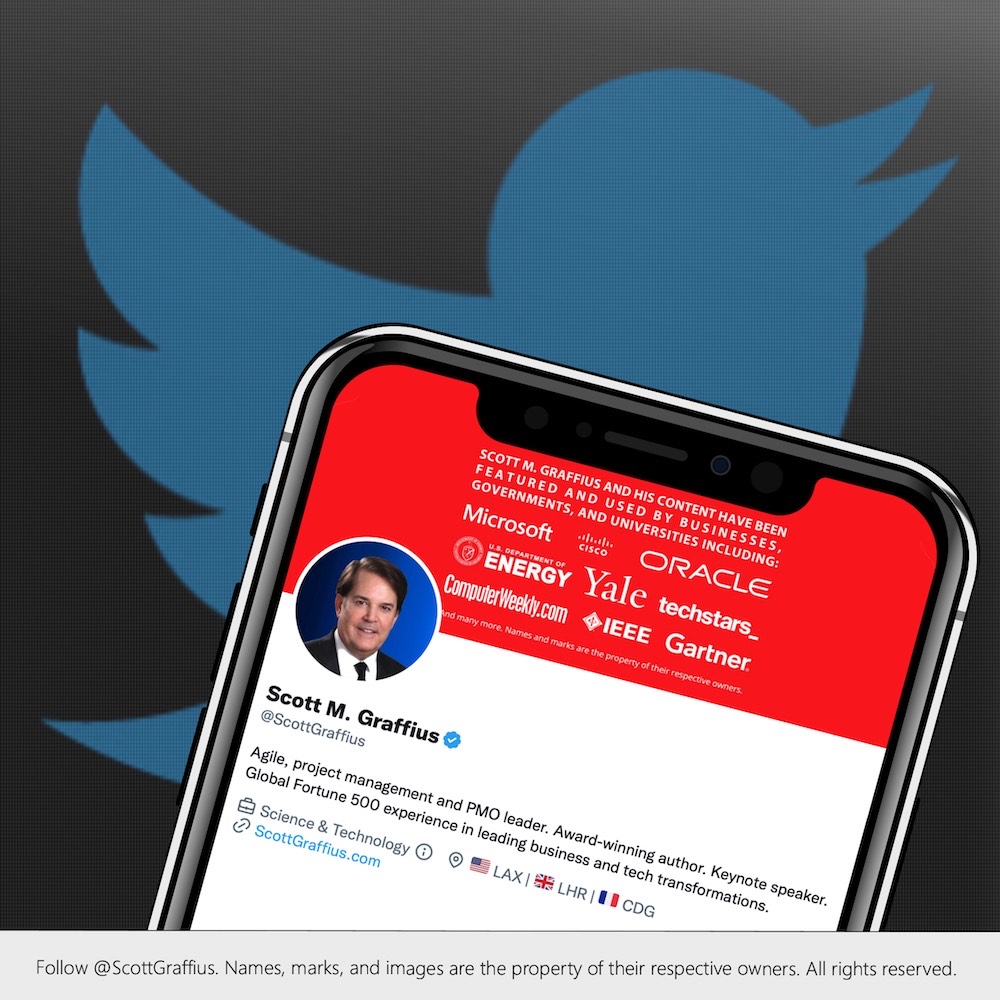
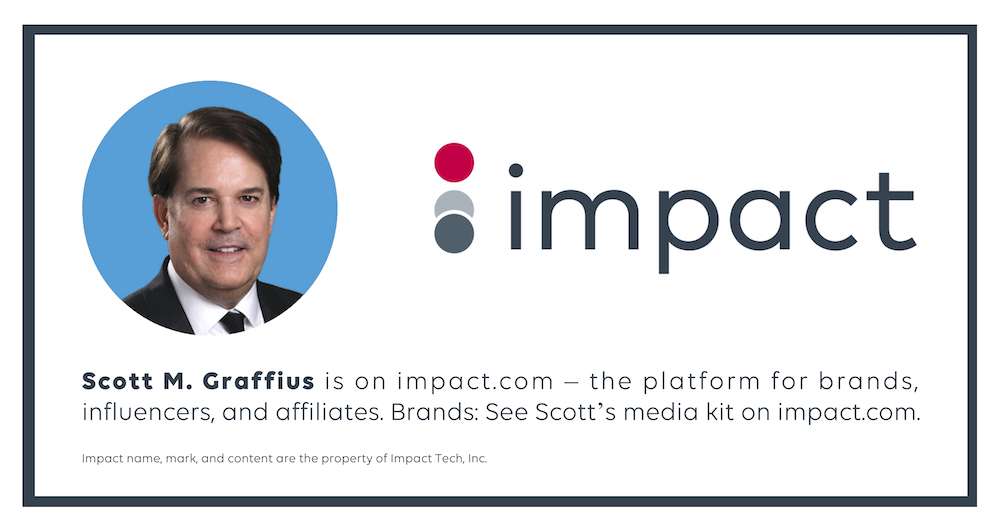

About Agile Scrum: Your Quick Start Guide with Step-by-Step Instructions
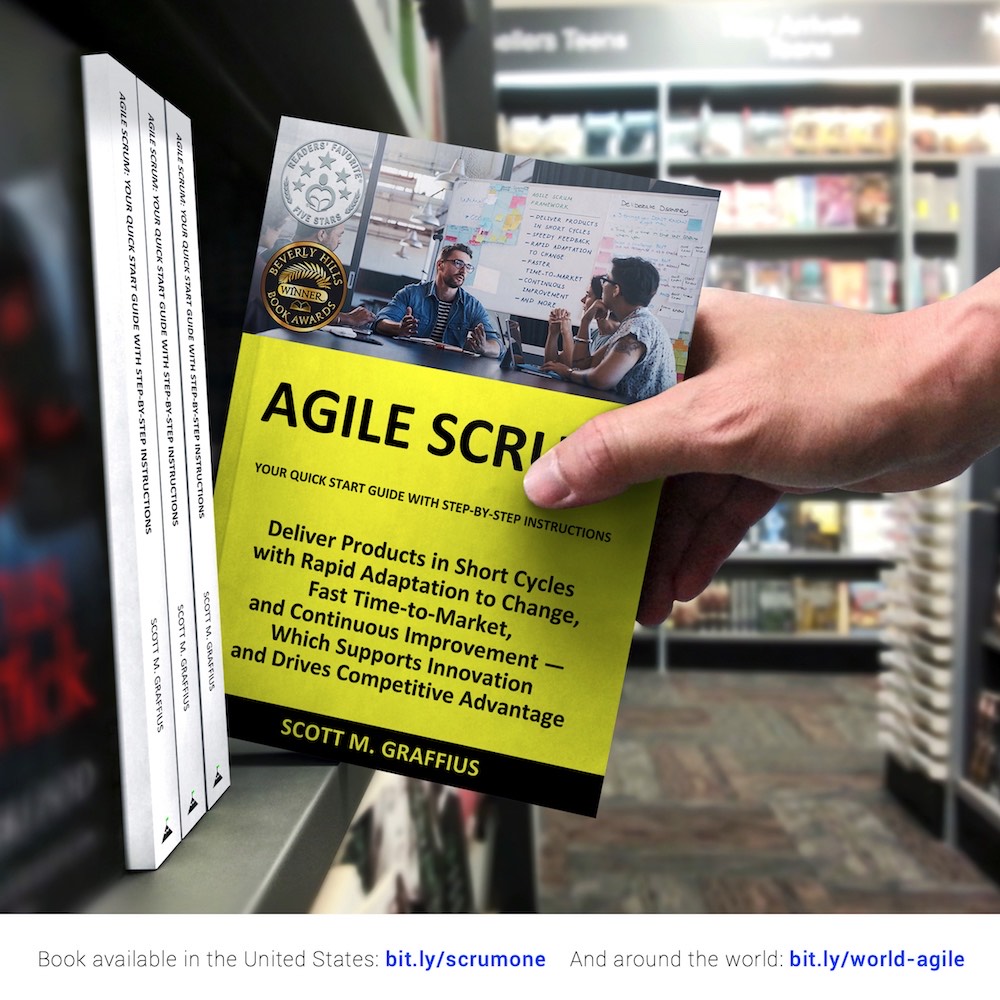
Shifting customer needs are common in today's marketplace. Businesses must be adaptive and responsive to change while delivering an exceptional customer experience to be competitive.
There are a variety of frameworks supporting the development of products and services, and most approaches fall into one of two broad categories: traditional or agile. Traditional practices such as waterfall engage sequential development, while agile involves iterative and incremental deliverables. Organizations are increasingly embracing agile to manage projects, and best meet their business needs of rapid response to change, fast delivery speed, and more.
With clear and easy to follow step-by-step instructions, Scott M. Graffius's award-winning Agile Scrum: Your Quick Start Guide with Step-by-Step Instructions helps the reader:
Hailed by Literary Titan as “the book highlights the versatility of Scrum beautifully.”
Winner of 17 first place awards.
Agile Scrum: Your Quick Start Guide with Step-by-Step Instructions is available in paperback and ebook/Kindle in the United States and around the world. Some links by country follow.

About Agile Transformation: A Brief Story of How an Entertainment Company Developed New Capabilities and Unlocked Business Agility to Thrive in an Era of Rapid Change
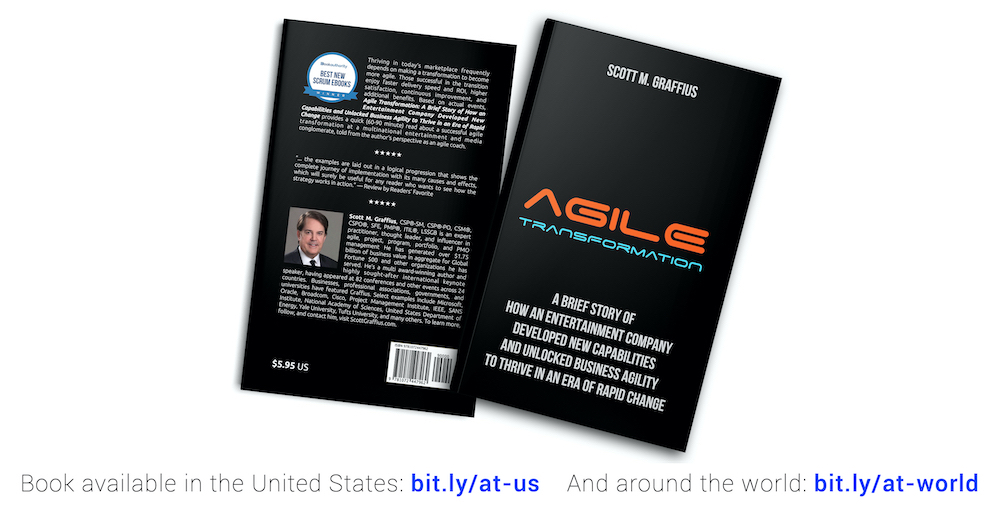
Thriving in today's marketplace frequently depends on making a transformation to become more agile. Those successful in the transition enjoy faster delivery speed and ROI, higher satisfaction, continuous improvement, and additional benefits.
Based on actual events, Agile Transformation: A Brief Story of How an Entertainment Company Developed New Capabilities and Unlocked Business Agility to Thrive in an Era of Rapid Change provides a quick (60-90 minute) read about a successful agile transformation at a multinational entertainment and media company, told from the author's perspective as an agile coach.
The award-winning book by Scott M. Graffius is available in paperback and ebook/Kindle in the United States and around the world. Some links by country follow.

The short link for this article is: https://bit.ly/win-skill
© Copyright 2024 Scott M. Graffius. All rights reserved. This material may not be published, broadcast, rewritten or redistributed without the express written permission of Scott M. Graffius.


A PDF of this article is here.
Note: When discussing moods and behaviors related to negotiations, the respective research uses the terms “angry” or “nasty,” contrasted with “happy” or “nice.” For that reason, this article uses those same terms. Also consider that an unhappy, irritated, or frustrated person may be labeled as “angry.” And a tough, difficult, or demanding person may be labeled as “nasty.”

Introduction
Chances are that you’ve already participated in some form of negotiations in your personal or professional life and that you’ll do so in the future. Negotiation is defined as a discussion between two or more parties aimed at resolving points of difference, crafting outcomes to satisfy various interests, or otherwise establishing an agreement. Handling a job offer, asking for a promotion, and buying and selling property such as a car or a house are just a few examples of deals you may have executed. Enhancing your negotiation strategies, tactics, and skills can have a big payoff on the outcomes of future deals.

Main Section of Article
What can you add to your arsenal to help you maximize value at your next visit to the bargaining table? How about this: Is it advantageous to be nice or nasty in a negotiation? “The Interpersonal Effects of Anger and Happiness in Negotiations” — a study by Gerben A. Van Kleef and colleagues at the University of Amsterdam — uncovered the answer. Read on to gain insights from the work.
The study encompassed three experiments. The first experiment involved a computer-mediated negotiation in which participants couldn’t see their opponent. And participants were led to believe their counterpart was either happy or angry. The findings follow. Participants with an opponent who they thought was angry placed lower demands and made larger concessions than did participants with an opponent who they thought was happy.
The procedure for experiment 2 was similar to the first one. This one further explored the effect of the informed mood of negotiation counterparts. The results showed that participants used information on mood to infer their opponents’ limit and they adjusted their demands accordingly.
The third and final experiment examined the interplay between experienced and communicated emotion. It showed that angry communications (unlike happy ones) induced fear and thereby mitigated the effect of the counterpart’s experienced emotion.

Conclusion
In conclusion, the study by Van Kleef and colleagues found that negotiators are influenced by their counterpart’s emotions. It showed that the expression of anger can be advantageous in some negotiation scenarios, challenging the “golden rule” that always being nice wins.
However, being angry or nasty doesn’t mean acting unethically. And if a person is simply acting a certain way, doing so could backfire if their counterpart sees through the display.
Based on the study and additional resources delineated in the references/sources section of this article, here are some considerations regarding behavior and mood during negotiations.
When to be nice in negotiations:
- Long-term relationships: In repeated negotiations, fostering goodwill with friendly gestures like concessions or expressing empathy can benefit both parties in the long run. It builds trust and cooperation, creating a more positive environment for future deals.
- Information exchange: When seeking information from your counterpart, a friendly approach encourages them to be open and share more readily. Creating a comfortable atmosphere lowers their guard and increases cooperation.
- Concessions for compromise: When seeking a compromise, initiating friendliness can signal your willingness to concede and encourage reciprocation from the other party, leading to a mutually beneficial agreement.
When to be nasty in negotiations:
- Short-term gains: In one-off negotiations, a strategic display of toughness (e.g., setting high demands, expressing firm resolve) can intimidate your opponent and pressure them into accepting less favorable terms.
- Protecting resources: When facing an unfair or demanding adversary, a firm and assertive stance can help protect your resources and prevent exploitation.
- Signaling strength: In situations where your bargaining power is unclear, projecting confidence and strength through assertive communication can deter the other party from taking advantage of you.
This article highlighted select valuable work on the nuances of negotiation behavior. For a deeper understanding, exploring the full research is highly recommended.


References/Sources
Select (partial) bibliography:
- Barry, B. (1999). The Tactical Use of Emotion in Negotiation. Research on Negotiation in Organizations, 7: 93-121.
- Clark, M.S., & Taraban, C.B. (1991). Reactions to and Willingness to Express Emotion in Two Types of Relationships. Journal of Experimental Social Psychology, 27: 324-336.
- Frijda, N.H. (1986). The Emotions. Cambridge, England: Cambridge University Press.
- Harvard Law School (2010, March 9). Should You be Nasty or Nice? Program on Negotiation, Harvard Law School. Available at: https://www.pon.harvard.edu/daily/negotiation-skills-daily/should-you-be-nasty-or-nice.
- Keltner, D., & Haidt, J. (1999). Social Functions of Emotions at Four Levels of Analysis. Cognition and Emotion, 13: 505-521.
- Hüffmeier, J., Freund, P. A., Zerres, A., Backhaus, K., & Hertel, G. (2014). Being Tough or Being Nice? A Meta-Analysis on the Impact of Hard- and Softline Strategies in Distributive Negotiations. Journal of Management, 40 (3): 866-892.
- Pietroni, D., Van Kleef, G.A., De Dreu, C.K.W., & Pagliaro, S. (2008). Emotions as Strategic Information: Effects of Other’s Emotions on Fixed-Pie Perception, Demands and Integrative Behavior in Negotiation. Journal of Experimental Social Psychology, 44: 1444-1454.
- Reis, H.T., & Collins, W.A. (2004). Relationships, Human Behavior, and Psychological Science. Current Directions in Psychological Science, 13: 233-237.
- Schwarz, N., & Clore, G.L. (1983). Mood, Misattribution, and Judgments of Well-Being: Informative and Directive Functions of Affective States. Journal of Personality and Social Psychology, 45: 513-523.
- Sinaceur, M., Adam, H., Van Kleef, G. & Galinsky, A. (2013, May 1). The advantages of being unpredictable: How emotional inconsistency extracts concessions in negotiation. Journal of Experimental Social Psychology, 49: 498-508.
- Thayer, S. (1980). The Effect of Facial Expression Sequence Upon Judgments of Emotion. Journal of Social Psychology, 111: 305-306.
- Van Beest, I., Van Kleef, G.A., & Van Dijk, E. (2008). Get Angry, Get Out: The Interpersonal Effects of Anger Communication in Multiparty Negotiation. Journal of Experimental Social Psychology, 44: 993-1002.
- Van Kleef, G. A. (2009). How Emotions Regulate Social Life: The Emotions as Social Information (EASI) Model. Current Directions in Psychological Science, 18 (3): 184-188.
- Van Kleef, G.A., De Dreu, C.K.W., & Manstead, A.S.R. (2004). The Interpersonal Effects of Anger and Happiness in Negotiations. Journal of Personality and Social Psychology, 86: 57-76.
- Voss, C. (2016). Never Split the Difference: Negotiating as if Your Life Depended on It. New York, New York: Harper Business.

How to Cite This Article
Graffius, Scott M. (2024, January 22). Should You Be Nasty or Nice in Negotiations? Available at: https://scottgraffius.com/blog/files/win-win.html.




About Scott M. Graffius

Scott M. Graffius, PMP, SA, CSP-SM, CSP-PO, CSM, CSPO, SFE, ITIL, LSSGB is an agile project management practitioner, consultant, thinker, creator, multi-award-winning author, and international public speaker. Founder and CEO of Exceptional PPM and PMO Solutions™ and subsidiary Exceptional Agility™, he has generated over $1.9 billion for Global Fortune 500 businesses and other organizations he has served. Graffius and content from his books, talks, workshops, and more have been featured and used by Microsoft, Oracle, Broadcom, Cisco, Gartner, Project Management Institute, IEEE, National Academy of Sciences, United States Department of Energy, Yale University, Tufts University, and others. He delights audiences with dynamic and engaging talks and workshops on agile project management, AI, Tech leadership, video game development, strategic alignment, the science of high performance teams, and more. To date, he's presented sessions at 89 conferences and other events across 25 countries.
His full bio is available here.
Connect with Scott on:



About Agile Scrum: Your Quick Start Guide with Step-by-Step Instructions

Shifting customer needs are common in today's marketplace. Businesses must be adaptive and responsive to change while delivering an exceptional customer experience to be competitive.
There are a variety of frameworks supporting the development of products and services, and most approaches fall into one of two broad categories: traditional or agile. Traditional practices such as waterfall engage sequential development, while agile involves iterative and incremental deliverables. Organizations are increasingly embracing agile to manage projects, and best meet their business needs of rapid response to change, fast delivery speed, and more.
With clear and easy to follow step-by-step instructions, Scott M. Graffius's award-winning Agile Scrum: Your Quick Start Guide with Step-by-Step Instructions helps the reader:
- Implement and use the most popular agile framework―Scrum;
- Deliver products in short cycles with rapid adaptation to change, fast time-to-market, and continuous improvement; and
- Support innovation and drive competitive advantage.
Hailed by Literary Titan as “the book highlights the versatility of Scrum beautifully.”
Winner of 17 first place awards.
Agile Scrum: Your Quick Start Guide with Step-by-Step Instructions is available in paperback and ebook/Kindle in the United States and around the world. Some links by country follow.
- 🇧🇷 Brazil
- 🇨🇦 Canada
- 🇨🇿 Czech Republic
- 🇩🇰 Denmark
- 🇫🇮 Finland
- 🇫🇷 France
- 🇩🇪 Germany
- 🇬🇷 Greece
- 🇭🇺 Hungary
- 🇮🇳 India
- 🇮🇪 Ireland
- 🇮🇱 Israel
- 🇮🇹 Italy
- 🇯🇵 Japan
- 🇱🇺 Luxembourg
- 🇲🇽 Mexico
- 🇳🇱 Netherlands
- 🇳🇿 New Zealand
- 🇳🇴 Norway
- 🇪🇸 Spain
- 🇸🇪 Sweden
- 🇨🇭 Switzerland
- 🇦🇪 UAE
- 🇬🇧 United Kingdom
- 🇺🇸 United States

About Agile Transformation: A Brief Story of How an Entertainment Company Developed New Capabilities and Unlocked Business Agility to Thrive in an Era of Rapid Change

Thriving in today's marketplace frequently depends on making a transformation to become more agile. Those successful in the transition enjoy faster delivery speed and ROI, higher satisfaction, continuous improvement, and additional benefits.
Based on actual events, Agile Transformation: A Brief Story of How an Entertainment Company Developed New Capabilities and Unlocked Business Agility to Thrive in an Era of Rapid Change provides a quick (60-90 minute) read about a successful agile transformation at a multinational entertainment and media company, told from the author's perspective as an agile coach.
The award-winning book by Scott M. Graffius is available in paperback and ebook/Kindle in the United States and around the world. Some links by country follow.
- 🇦🇺 Australia
- 🇦🇹 Austria
- 🇧🇷 Brazil
- 🇨🇦 Canada
- 🇨🇿 Czech Republic
- 🇩🇰 Denmark
- 🇫🇮 Finland
- 🇫🇷 France
- 🇩🇪 Germany
- 🇬🇷 Greece
- 🇮🇳 India
- 🇮🇪 Ireland
- 🇯🇵 Japan
- 🇱🇺 Luxembourg
- 🇲🇽 Mexico
- 🇳🇱 Netherlands
- 🇳🇿 New Zealand
- 🇪🇸 Spain
- 🇸🇪 Sweden
- 🇨🇭 Switzerland
- 🇦🇪 United Arab Emirates
- 🇬🇧 United Kingdom
- 🇺🇸 United States

The short link for this article is: https://bit.ly/win-skill
© Copyright 2024 Scott M. Graffius. All rights reserved. This material may not be published, broadcast, rewritten or redistributed without the express written permission of Scott M. Graffius.

Scott M. Graffius' 'Phases of Team Development' was Spotlighted in Journal of Neurosurgery
20 December 2024
BY SCOTT M. GRAFFIUS | ScottGraffius.com
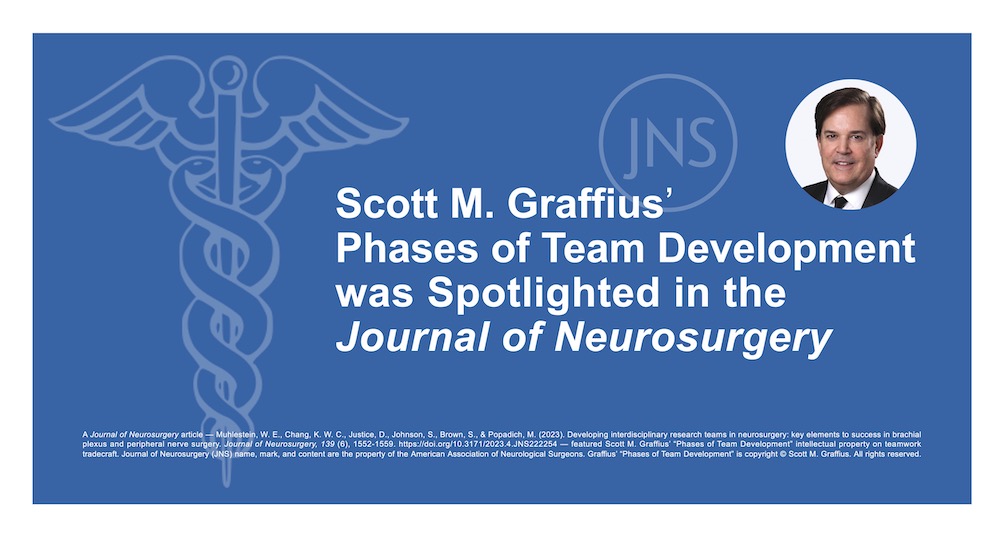

Scott M. Graffius' Work on Team Tradecraft
Informed by the research of Bruce W. Tuckman and Mary Ann C. Jensen, over 100 subsequent studies, and Scott M. Graffius' first-hand professional experience with, and analysis of, team leadership and performance, Graffius created his ‘Phases of Team Development’ as a unique perspective and visual conveying the five phases of team development — Forming, Storming, Norming, Performing, and Adjourning — inclusive of a graph showing how performance varies by phase, as well as the characteristics and strategies for each phase.
Graffius' intellectual property (IP) is registered with the United States Copyright Office.
Graffius initially developed his ‘Phases of Team Development’ unique material in 2008, and he periodically refreshes it.
For reference, the visual for the current (2024) edition is below and the details are here.
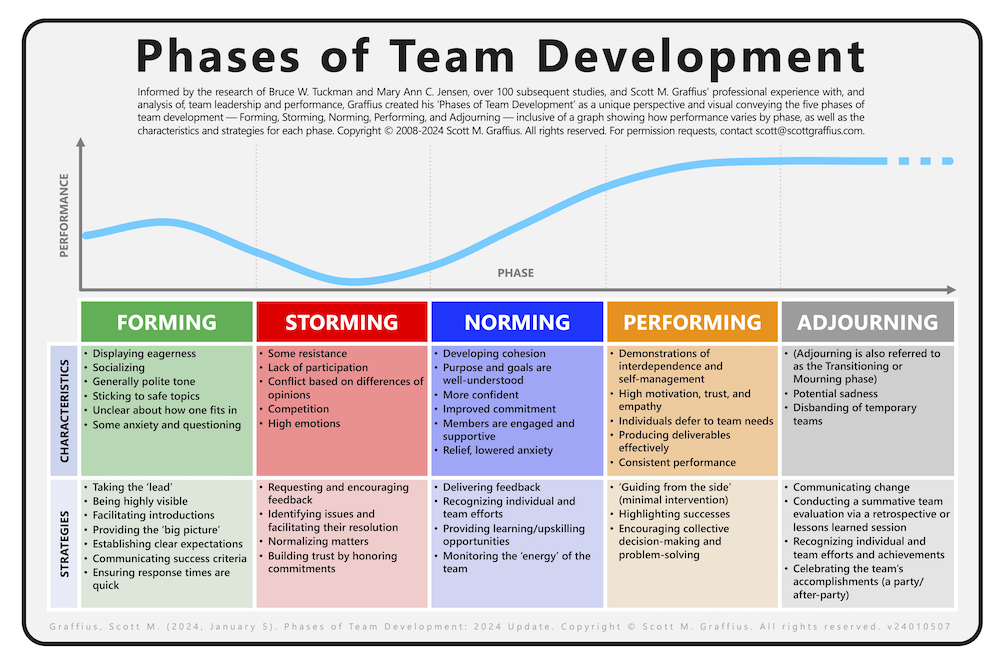
Organizations around the world engage Graffius to deliver compelling talks and workshops. To date, he's presented sessions at 91 conferences and other events across 25 countries:

Graffius ‘Phases of Team Development’ IP is central and key to many of those sessions. His rate card and a listing of his engagements are at https://scottgraffius.com/resources/Exceptional-PPM-and-PMO-Solutions-Rate-Card-for-2024-2025-v24071607.pdf and https://scottgraffius.com/publicspeaker.html, respectively.
With an authorization/license from Graffius, his ‘Phases of Team Development’ intellectual property is featured and used by businesses, professional associations, government agencies, and universities around the globe. Examples include:
The Journal of Neurosurgery (JNS) was added to this list! A JNS article — Muhlestein, W. E., Chang, K. W. C., Justice, D., Johnson, S., Brown, S., & Popadich, M. (2023). Developing interdisciplinary research teams in neurosurgery: key elements to success in brachial plexus and peripheral nerve surgery. Journal of Neurosurgery, 139 (6), 1552-1559. https://doi.org/10.3171/2023.4.JNS222254 — featured Graffius' 'Phases of Team Development' intellectual property on teamwork tradecraft.
The first page of the article is shown below.

Next, citation 40 (a reference to Graffius' work) annotation is shown below.

Team development material, based on Graffius' work, is shown below.

Lastly, citation 40 in the References section is shown below.

Read on to learn:

About the Journal of Neurosurgery
The Journal of Neurosurgery (JNS) is a leading, peer-reviewed medical journal dedicated to advancing the field of neurosurgery. Published by the American Association of Neurological Surgeons (AANS), it serves as a premier platform for original research, clinical studies, and innovative techniques in the diagnosis and treatment of neurological conditions. With a history spanning over 75 years, JNS is widely recognized for its commitment to promoting scientific discovery and clinical excellence. Its global readership includes neurosurgeons, researchers, and healthcare professionals striving to improve patient outcomes.

About Scott M. Graffius

Scott M. Graffius is an agile project management expert practitioner, consultant, award-winning author, and international public speaker.
Graffius has generated more than USD $1.9 billion in business value for organizations served, including Fortune 500 companies. Businesses and industries range from technology (including R&D and AI) to entertainment, financial services, and healthcare, government, social media, and more.
Graffius leads the professional services firm Exceptional PPM and PMO Solutions, along with its subsidiary Exceptional Agility. These consultancies offer strategic and tactical advisory, training, embedded talent, and consulting services to public, private, and government sectors. They help organizations enhance their capabilities and results in agile, project management, program management, portfolio management, and PMO leadership, supporting innovation and driving competitive advantage. The consultancies confidently back services with a Delighted Client Guarantee™. Graffius is a former vice president of project management with a publicly traded provider of diverse consumer products and services over the Internet. Before that, he ran and supervised the delivery of projects and programs in public and private organizations with businesses ranging from e-commerce to advanced technology products and services, retail, manufacturing, entertainment, and more. He has experience with consumer, business, reseller, government, and international markets.
He is the author of two award-winning books.
Organizations around the world invite Graffius to speak on tech (including AI), agile, project management, program management, portfolio management, and PMO leadership. He has developed and delivered unique and compelling talks and workshops. To date, Graffius has delivered 91 sessions across 25 countries. Select examples of events include Agile Trends Gov, BSides (Newcastle Upon Tyne), Conf42 Quantum Computing, DevDays Europe, DevOps Institute, DevOpsDays (Geneva), Frug’Agile, IEEE, Microsoft, Scottish Summit, Scrum Alliance RSG (Nepal), Techstars, and W Love Games International Video Game Development Conference (Helsinki), and more. With an average rating of 4.81 (on a scale of 1-5), his sessions are highly valued.
Prominent businesses, professional associations, government agencies, and universities have featured Graffius and his work including content from his books, talks, workshops, and more. Select examples include:
Graffius has been actively involved with the Project Management Institute (PMI) in the development of professional standards. He was a member of the team which produced the Practice Standard for Work Breakdown Structures—Second Edition. Graffius was a contributor and reviewer of A Guide to the Project Management Body of Knowledge—Sixth Edition, The Standard for Program Management—Fourth Edition, and The Practice Standard for Project Estimating—Second Edition. He was also a subject matter expert reviewer of content for the PMI’s Congress. Beyond the PMI, Graffius also served as a member of the review team for two of the Scrum Alliance’s Global Scrum Gatherings.
Graffius has a bachelor’s degree in psychology with a focus in Human Factors. He holds eight professional certifications:
He is an active member of the Scrum Alliance, the Project Management Institute (PMI), and the Institute of Electrical and Electronics Engineers (IEEE).
He divides his time between Los Angeles and Paris, France.







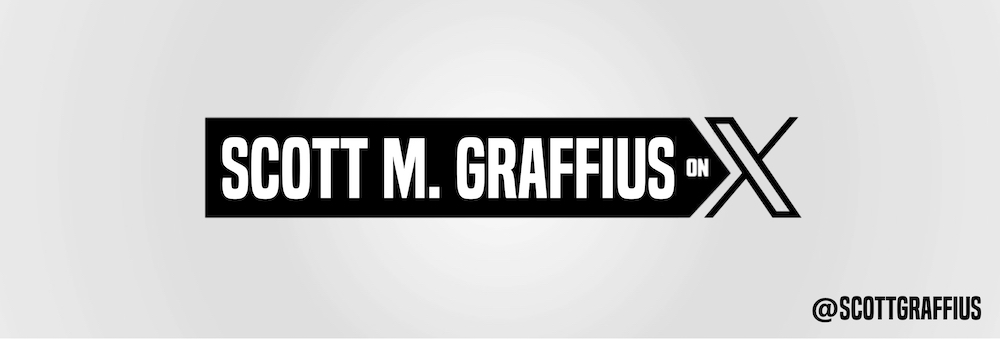


About Agile Scrum: Your Quick Start Guide with Step-by-Step Instructions

Shifting customer needs are common in today's marketplace. Businesses must be adaptive and responsive to change while delivering an exceptional customer experience to be competitive.
There are a variety of frameworks supporting the development of products and services, and most approaches fall into one of two broad categories: traditional or agile. Traditional practices such as waterfall engage sequential development, while agile involves iterative and incremental deliverables. Organizations are increasingly embracing agile to manage projects, and best meet their business needs of rapid response to change, fast delivery speed, and more.
With clear and easy to follow step-by-step instructions, Scott M. Graffius's award-winning Agile Scrum: Your Quick Start Guide with Step-by-Step Instructions helps the reader:
Hailed by Literary Titan as “the book highlights the versatility of Scrum beautifully.”
Winner of 17 first place awards.
Agile Scrum: Your Quick Start Guide with Step-by-Step Instructions is available in paperback and ebook/Kindle in the United States and around the world. Some links by country follow.

About Agile Transformation: A Brief Story of How an Entertainment Company Developed New Capabilities and Unlocked Business Agility to Thrive in an Era of Rapid Change

Thriving in today's marketplace frequently depends on making a transformation to become more agile. Those successful in the transition enjoy faster delivery speed and ROI, higher satisfaction, continuous improvement, and additional benefits.
Based on actual events, Agile Transformation: A Brief Story of How an Entertainment Company Developed New Capabilities and Unlocked Business Agility to Thrive in an Era of Rapid Change provides a quick (60-90 minute) read about a successful agile transformation at a multinational entertainment and media company, told from the author's perspective as an agile coach.
The award-winning book by Scott M. Graffius is available in paperback and ebook/Kindle in the United States and around the world. Some links by country follow.


How to Cite This Article
Graffius, Scott M. (2024, December 20). Scott M. Graffius' 'Phases of Team Development' was Spotlighted in Journal of Neurosurgery. Available at: https://scottgraffius.com/blog/files/jns-2024.html. DOI: 10.13140/RG.2.2.31746.59849.


Post-Publication Notes
If there are any supplements or updates to this article after the date of publication, they will appear here.


Content Acknowledgements
This article includes limited excerpts from the Journal of Neurosurgery, attributed to the Journal of Neurosurgery and used under fair use for news reporting and analysis.
Journal of Neurosurgery name, mark and content are the property of the American Association of Neurological Surgeons.
Graffius’ ‘Phases of Team Development’ is copyright © Scott M. Graffius. All rights reserved. Visit ScottGraffius.com to learn more.


Short Link for Article
The short link for this article is https://bit.ly/the-jns


Copyright
Copyright © Scott M. Graffius. All rights reserved.
Content on this site—including text, images, videos, and data—may not be used for training or input into any artificial intelligence, machine learning, or automatized learning systems, or published, broadcast, rewritten, or redistributed without the express written permission of Scott M. Graffius.



Scott M. Graffius' Work on Team Tradecraft
Informed by the research of Bruce W. Tuckman and Mary Ann C. Jensen, over 100 subsequent studies, and Scott M. Graffius' first-hand professional experience with, and analysis of, team leadership and performance, Graffius created his ‘Phases of Team Development’ as a unique perspective and visual conveying the five phases of team development — Forming, Storming, Norming, Performing, and Adjourning — inclusive of a graph showing how performance varies by phase, as well as the characteristics and strategies for each phase.
Graffius' intellectual property (IP) is registered with the United States Copyright Office.
Graffius initially developed his ‘Phases of Team Development’ unique material in 2008, and he periodically refreshes it.
For reference, the visual for the current (2024) edition is below and the details are here.

Organizations around the world engage Graffius to deliver compelling talks and workshops. To date, he's presented sessions at 91 conferences and other events across 25 countries:
- Armenia,
- Australia,
- Brazil,
- Canada,
- Czech Republic,
- Finland,
- France,
- Germany,
- Greece,
- Hong Kong,
- Hungary,
- India, Ireland,
- Lithuania,
- Luxembourg,
- Nepal,
- Netherlands,
- New Zealand,
- Norway,
- Romania,
- Sweden,
- Switzerland,
- United Arab Emirates,
- United Kingdom,
- and the United States.

Graffius ‘Phases of Team Development’ IP is central and key to many of those sessions. His rate card and a listing of his engagements are at https://scottgraffius.com/resources/Exceptional-PPM-and-PMO-Solutions-Rate-Card-for-2024-2025-v24071607.pdf and https://scottgraffius.com/publicspeaker.html, respectively.
With an authorization/license from Graffius, his ‘Phases of Team Development’ intellectual property is featured and used by businesses, professional associations, government agencies, and universities around the globe. Examples include:
- Adobe,
- American Management Association,
- Amsterdam Public Health Research Institute,
- Bayer
- Boston University,
- Broadcom,
- Cisco,
- Deimos Aerospace,
- DevOps Institute,
- Erste Group Bank AG (Austria),
- FINAT,
- Ford Motor Company,
- FSU College of Medicine,
- Hasso Plattner Institute,
- IEEE,
- James Madison University,
- Johns Hopkins University,
- LeadingEng,
- London South Bank University,
- Manufacturers Alliance,
- Microsoft,
- New Zealand Government,
- Oracle,
- Royal Australasian College of Physicians,
- TBS Switzerland,
- Torrens University Australia,
- Tufts University,
- U.S. National Park Service,
- U.S. Tennis Association,
- UC San Diego,
- UK Sports Institute,
- University of Galway Ireland,
- Victorian Institute of Technology (Australia),
- Virginia Tech,
- Warsaw University,
- Western Sydney University,
- World Resources Institute,
- Yale University,
- ZHAW Zurich University of Applied Sciences,
- and many others.
The Journal of Neurosurgery (JNS) was added to this list! A JNS article — Muhlestein, W. E., Chang, K. W. C., Justice, D., Johnson, S., Brown, S., & Popadich, M. (2023). Developing interdisciplinary research teams in neurosurgery: key elements to success in brachial plexus and peripheral nerve surgery. Journal of Neurosurgery, 139 (6), 1552-1559. https://doi.org/10.3171/2023.4.JNS222254 — featured Graffius' 'Phases of Team Development' intellectual property on teamwork tradecraft.
The first page of the article is shown below.

Next, citation 40 (a reference to Graffius' work) annotation is shown below.

Team development material, based on Graffius' work, is shown below.

Lastly, citation 40 in the References section is shown below.

Read on to learn:
- About the Journal of Neurosurgery,
- About Scott M. Graffius,
- How to Cite This Article,
- and more.

About the Journal of Neurosurgery
The Journal of Neurosurgery (JNS) is a leading, peer-reviewed medical journal dedicated to advancing the field of neurosurgery. Published by the American Association of Neurological Surgeons (AANS), it serves as a premier platform for original research, clinical studies, and innovative techniques in the diagnosis and treatment of neurological conditions. With a history spanning over 75 years, JNS is widely recognized for its commitment to promoting scientific discovery and clinical excellence. Its global readership includes neurosurgeons, researchers, and healthcare professionals striving to improve patient outcomes.

About Scott M. Graffius

Scott M. Graffius is an agile project management expert practitioner, consultant, award-winning author, and international public speaker.
Graffius has generated more than USD $1.9 billion in business value for organizations served, including Fortune 500 companies. Businesses and industries range from technology (including R&D and AI) to entertainment, financial services, and healthcare, government, social media, and more.
Graffius leads the professional services firm Exceptional PPM and PMO Solutions, along with its subsidiary Exceptional Agility. These consultancies offer strategic and tactical advisory, training, embedded talent, and consulting services to public, private, and government sectors. They help organizations enhance their capabilities and results in agile, project management, program management, portfolio management, and PMO leadership, supporting innovation and driving competitive advantage. The consultancies confidently back services with a Delighted Client Guarantee™. Graffius is a former vice president of project management with a publicly traded provider of diverse consumer products and services over the Internet. Before that, he ran and supervised the delivery of projects and programs in public and private organizations with businesses ranging from e-commerce to advanced technology products and services, retail, manufacturing, entertainment, and more. He has experience with consumer, business, reseller, government, and international markets.
He is the author of two award-winning books.
- His first book, Agile Scrum: Your Quick Start Guide with Step-by-Step Instructions (ISBN-13: 9781533370242), received 17 awards.
- His second book is Agile Transformation: A Brief Story of How an Entertainment Company Developed New Capabilities and Unlocked Business Agility to Thrive in an Era of Rapid Change (ISBN-13: 9781072447962). BookAuthority named it one of the best Scrum books of all time.
Organizations around the world invite Graffius to speak on tech (including AI), agile, project management, program management, portfolio management, and PMO leadership. He has developed and delivered unique and compelling talks and workshops. To date, Graffius has delivered 91 sessions across 25 countries. Select examples of events include Agile Trends Gov, BSides (Newcastle Upon Tyne), Conf42 Quantum Computing, DevDays Europe, DevOps Institute, DevOpsDays (Geneva), Frug’Agile, IEEE, Microsoft, Scottish Summit, Scrum Alliance RSG (Nepal), Techstars, and W Love Games International Video Game Development Conference (Helsinki), and more. With an average rating of 4.81 (on a scale of 1-5), his sessions are highly valued.
Prominent businesses, professional associations, government agencies, and universities have featured Graffius and his work including content from his books, talks, workshops, and more. Select examples include:
- Adobe,
- American Management Association,
- Amsterdam Public Health Research Institute,
- Bayer,
- Boston University,
- Broadcom,
- Cisco,
- Constructor University Germany,
- Deimos Aerospace,
- DevOps Institute,
- EU's European Commission,
- Ford Motor Company,
- Hasso Plattner Institute Germany,
- IEEE,
- Johns Hopkins University,
- London South Bank University,
- Microsoft,
- National Academy of Sciences,
- New Zealand Government,
- Oracle,
- Pinterest Inc.,
- Project Management Institute,
- TBS Switzerland,
- Torrens University Australia,
- Tufts University,
- UC San Diego,
- UK Sports Institute,
- University of Galway Ireland,
- U.S. Department of Energy,
- U.S. National Park Service,
- U.S. Tennis Association,
- Virginia Tech,
- Warsaw University of Technology,
- Yale University,
- and many others.
Graffius has been actively involved with the Project Management Institute (PMI) in the development of professional standards. He was a member of the team which produced the Practice Standard for Work Breakdown Structures—Second Edition. Graffius was a contributor and reviewer of A Guide to the Project Management Body of Knowledge—Sixth Edition, The Standard for Program Management—Fourth Edition, and The Practice Standard for Project Estimating—Second Edition. He was also a subject matter expert reviewer of content for the PMI’s Congress. Beyond the PMI, Graffius also served as a member of the review team for two of the Scrum Alliance’s Global Scrum Gatherings.
Graffius has a bachelor’s degree in psychology with a focus in Human Factors. He holds eight professional certifications:
- Certified SAFe 6 Agilist (SA),
- Certified Scrum Professional - ScrumMaster (CSP-SM),
- Certified Scrum Professional - Product Owner (CSP-PO),
- Certified ScrumMaster (CSM),
- Certified Scrum Product Owner (CSPO),
- Project Management Professional (PMP),
- Lean Six Sigma Green Belt (LSSGB), and
- IT Service Management Foundation (ITIL).
He is an active member of the Scrum Alliance, the Project Management Institute (PMI), and the Institute of Electrical and Electronics Engineers (IEEE).
He divides his time between Los Angeles and Paris, France.









About Agile Scrum: Your Quick Start Guide with Step-by-Step Instructions

Shifting customer needs are common in today's marketplace. Businesses must be adaptive and responsive to change while delivering an exceptional customer experience to be competitive.
There are a variety of frameworks supporting the development of products and services, and most approaches fall into one of two broad categories: traditional or agile. Traditional practices such as waterfall engage sequential development, while agile involves iterative and incremental deliverables. Organizations are increasingly embracing agile to manage projects, and best meet their business needs of rapid response to change, fast delivery speed, and more.
With clear and easy to follow step-by-step instructions, Scott M. Graffius's award-winning Agile Scrum: Your Quick Start Guide with Step-by-Step Instructions helps the reader:
- Implement and use the most popular agile framework―Scrum;
- Deliver products in short cycles with rapid adaptation to change, fast time-to-market, and continuous improvement; and
- Support innovation and drive competitive advantage.
Hailed by Literary Titan as “the book highlights the versatility of Scrum beautifully.”
Winner of 17 first place awards.
Agile Scrum: Your Quick Start Guide with Step-by-Step Instructions is available in paperback and ebook/Kindle in the United States and around the world. Some links by country follow.
- 🇧🇷 Brazil
- 🇨🇦 Canada
- 🇨🇿 Czech Republic
- 🇩🇰 Denmark
- 🇫🇮 Finland
- 🇫🇷 France
- 🇩🇪 Germany
- 🇬🇷 Greece
- 🇭🇺 Hungary
- 🇮🇳 India
- 🇮🇪 Ireland
- 🇮🇱 Israel
- 🇮🇹 Italy
- 🇯🇵 Japan
- 🇱🇺 Luxembourg
- 🇲🇽 Mexico
- 🇳🇱 Netherlands
- 🇳🇿 New Zealand
- 🇳🇴 Norway
- 🇪🇸 Spain
- 🇸🇪 Sweden
- 🇨🇭 Switzerland
- 🇦🇪 UAE
- 🇬🇧 United Kingdom
- 🇺🇸 United States

About Agile Transformation: A Brief Story of How an Entertainment Company Developed New Capabilities and Unlocked Business Agility to Thrive in an Era of Rapid Change

Thriving in today's marketplace frequently depends on making a transformation to become more agile. Those successful in the transition enjoy faster delivery speed and ROI, higher satisfaction, continuous improvement, and additional benefits.
Based on actual events, Agile Transformation: A Brief Story of How an Entertainment Company Developed New Capabilities and Unlocked Business Agility to Thrive in an Era of Rapid Change provides a quick (60-90 minute) read about a successful agile transformation at a multinational entertainment and media company, told from the author's perspective as an agile coach.
The award-winning book by Scott M. Graffius is available in paperback and ebook/Kindle in the United States and around the world. Some links by country follow.
- 🇦🇺 Australia
- 🇦🇹 Austria
- 🇧🇷 Brazil
- 🇨🇦 Canada
- 🇨🇿 Czech Republic
- 🇩🇰 Denmark
- 🇫🇮 Finland
- 🇫🇷 France
- 🇩🇪 Germany
- 🇬🇷 Greece
- 🇮🇳 India
- 🇮🇪 Ireland
- 🇯🇵 Japan
- 🇱🇺 Luxembourg
- 🇲🇽 Mexico
- 🇳🇱 Netherlands
- 🇳🇿 New Zealand
- 🇪🇸 Spain
- 🇸🇪 Sweden
- 🇨🇭 Switzerland
- 🇦🇪 United Arab Emirates
- 🇬🇧 United Kingdom
- 🇺🇸 United States


How to Cite This Article
Graffius, Scott M. (2024, December 20). Scott M. Graffius' 'Phases of Team Development' was Spotlighted in Journal of Neurosurgery. Available at: https://scottgraffius.com/blog/files/jns-2024.html. DOI: 10.13140/RG.2.2.31746.59849.


Post-Publication Notes
If there are any supplements or updates to this article after the date of publication, they will appear here.


Content Acknowledgements
This article includes limited excerpts from the Journal of Neurosurgery, attributed to the Journal of Neurosurgery and used under fair use for news reporting and analysis.
Journal of Neurosurgery name, mark and content are the property of the American Association of Neurological Surgeons.
Graffius’ ‘Phases of Team Development’ is copyright © Scott M. Graffius. All rights reserved. Visit ScottGraffius.com to learn more.


Short Link for Article
The short link for this article is https://bit.ly/the-jns


Copyright
Copyright © Scott M. Graffius. All rights reserved.
Content on this site—including text, images, videos, and data—may not be used for training or input into any artificial intelligence, machine learning, or automatized learning systems, or published, broadcast, rewritten, or redistributed without the express written permission of Scott M. Graffius.

